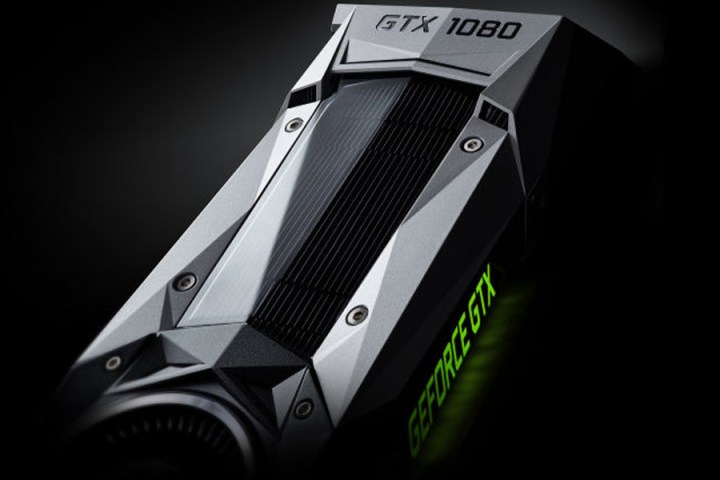
The GTX 1080 is set to launch May 27 and the GTX 1070 on June 10. The pricing for the two cards in each case is $50 higher than the previous-generation GTX 980 and GTX 970. The claimed performance jumps over Nvidia’s premium gaming graphics cards, the GTX Titan X and GTX 980Ti, make the new cards’ prices look like a bargain. The GTX Titan X costs $1,000 at retail and the GTX 980Ti costs $650. Nvidia said the GTX 1080 is faster than the GTX Titan X in some functions and three times as energy-efficient.
“Right now 1080 is simply the fastest card in the world because it’s based on new Pascal arch and our GP104 GPU,” Nvidia told Digital Trends.
There are several reasons to expect faster performance from the new cards. Nvidia uses a new microarchitecture called Pascal in the GPUs (graphical processing units) for the cards. Microarchitecture is the design of the processor’s electrical circuitry. Faster Micro GDDR5X memory is used on the GTX 1080, while the GTX 1070 uses GDDR5 memory components. The company also said the cards are manufactured with a lean manufacturing process called TSMC 16nm FinFET, which may not affect performance, but does minimize waste.
Nvidia claims the Pascal GPU’s efficiencies enable boosting the GTX 1080’s clock speed to 2144Mhz, almost twice as fast as the GTX Titan X. Even with this speed boost, however, heat buildup is minimized. In a real-time demo, Nvidia showed the GTX 1080 running under load with a maximum temperature of just 67 degrees. Heads up to overclocking.
Nvidia also announced three new software features for the cards. The new capabilities include in-game screenshots, VR audio capability to place sounds dependent on movement and position, and a multiple viewpoint capacity to render and display up to 16 simultaneous viewpoints on multiple monitor setups.
All said, Nvidia’s new Pascal-based GPU GTX 1080 and GTX 1070 sound like huge advances. Lab testing will tell the final story.
And remember, this is just the first Pascal-based card. When Digital Trends asked about possible future versions, Nvidia said, “We didn’t announce any other products based on Pascal for gaming except 1070 but Jen-Hsun did say these are the first of more to come based on Pascal so you will have to prognosticate yourself.”



